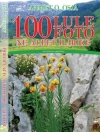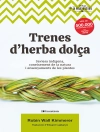Non-timber forest products (NTFP) hold economic and cultural signi?cance for millions of people across the globe. For instance, hundreds of millions of rural peoples currently derive a signi?cant portion of both their subsistence needs and cash income from gathered plant and animal products (Iqbal 1993; Vedeld et al. 2004). Thousands of wild NTFP are also harvested for local use in other cultural and religious activities, such as rituals, ceremonies and dances (e. g. FAO 1991). A growing body of literature has illustrated that NTFP harvest can have e- logical consequences at multiple ecological scales, and that demographic responses to harvest are heavily in?uenced by harvesting practices (see review by Ticktin 2004). However, although many NTFP are harvested from disturbed habitats and subject to multiple pressures (Cunningham 2001), few quantitative studies have addressed this issue. For example, a small number of studies have assessed the demographic effects of NTFP management practices in the context of browsing or grazing (Endress et al. 2004b; Ghimire et al. 2005), or human-induced ?re (Ticktin 2005). Nonetheless, the demographic consequences of NTFP harvest and mana- ment in the context of other disturbance factors, such as alien invasive species, have not been addressed to date.
Spis treści
Floristic and structural changes related to opportunistic soil tilling and pasture planting in grassland communities of the Flooding Pampa.- Decreased frugivory and seed germination rate do not reduce seedling recruitment rates of Aristotelia chilensis in a fragmented forest.- Vascular plant diversity and climate change in the alpine zone of the Lefka Ori, Crete.- RAPD variation among North Vietnamese Flemingia macrophylla (Willd.) Kuntze ex Merr. accessions.- Non-timber forest product harvesting in alien-dominated forests: effects of frond-harvest and rainfall on the demography of two native Hawaiian ferns.- Tequila and other Agave spirits from west-central Mexico: current germplasm diversity, conservation and origin.- Spatial patterns of dicot diversity in Argentina.- Unsustainable collection and unfair trade? Uncovering and assessing assumptions regarding Central Himalayan medicinal plant conservation.- Woody plant species richness in the Turvo State park, a large remnant of deciduous Atlantic forest, Brazil.- Genetic diversity assessment in Somali sorghum (Sorghum bicolor (L.) Moench) accessions using microsatellite markers.- Demand for rubber is causing the loss of high diversity rain forest in SW China.- Comparing conservation priorities for useful plants among botanists and Tibetan doctors.- Environmental heterogeneity and disturbance by humans control much of the tree species diversity of Atlantic montane forest fragments in SE Brazil.- Correspondence between scientific and traditional ecological knowledge: rain forest classification by the non-indigenous ribereños in Peruvian Amazonia.- Species richness, endemism and conservation of Mexican gymnosperms.- Impacts of El Niño related drought and forest fires on sun bear fruit resources in lowland dipterocarpforest of East Borneo.- Pollinator shift and reproductive performance of the Qinghai–Tibetan Plateau endemic and endangered Swertia przewalskii (Gentianaceae).- An analysis of altitudinal behavior of tree species in Subansiri district, Eastern Himalaya.- Distribution, diversity and environmental adaptation of highland papayas (Vasconcellea spp.) in tropical and subtropical America.- Ecological niche modeling and geographic distribution of the genus Polianthes L. (Agavaceae) in Mexico: using niche modeling to improve assessments of risk status.- The uses, local perceptions and ecological status of 16 woody species of Gadumire Sub-county, Uganda.- Mapping the geographic distribution of Aglaia bourdillonii Gamble (Meliaceae), an endemic and threatened plant, using ecological niche modeling.- Optimizing conservation of forest diversity: a country-wide approach in Mexico.- Seeing the wood for the trees: how conservation policies can place greater pressure on village forests in southwest China.- Medicinal plant conservation and management: distribution of wild and cultivated species in eight countries.- Biodiversity effects on biomass production and invasion resistance in annual versus perennial plant communities.












